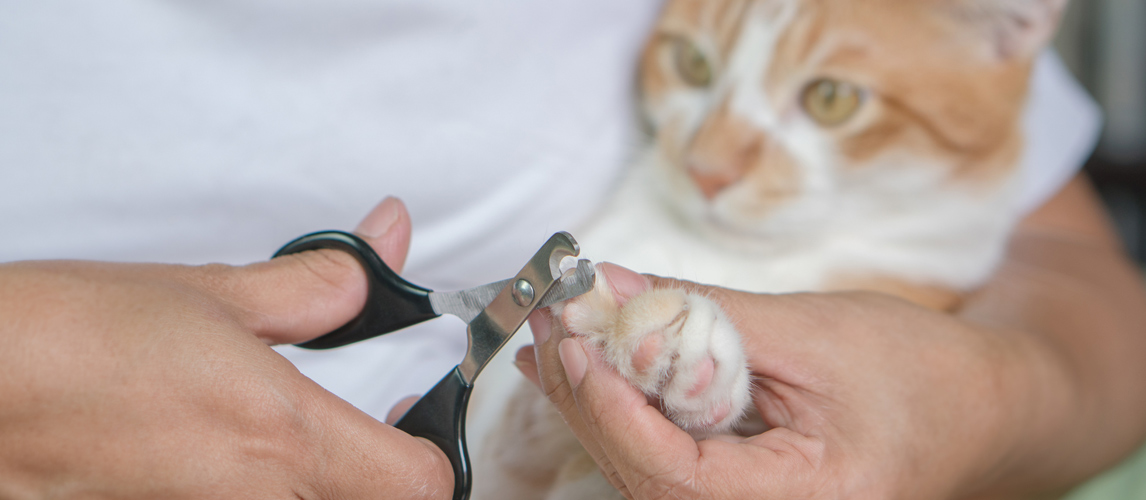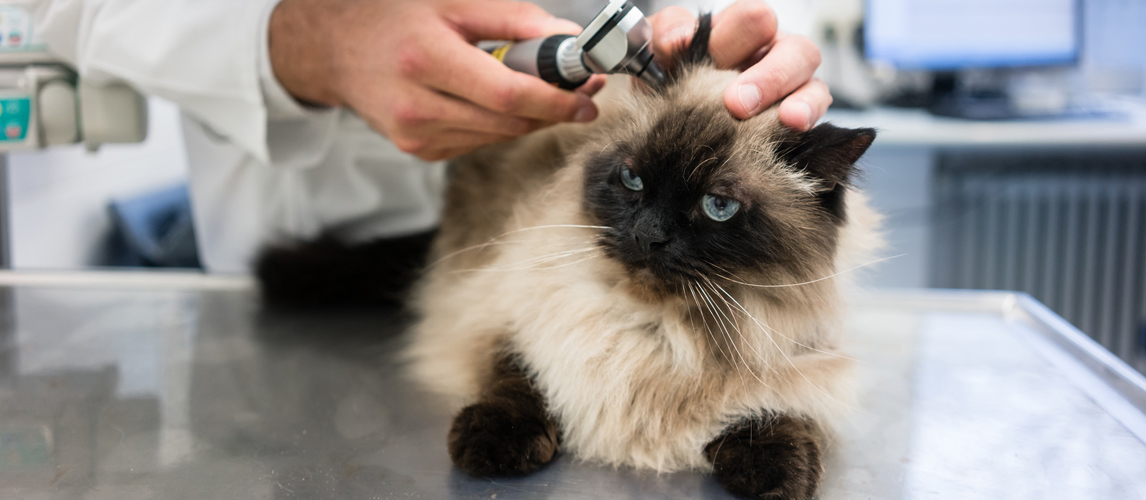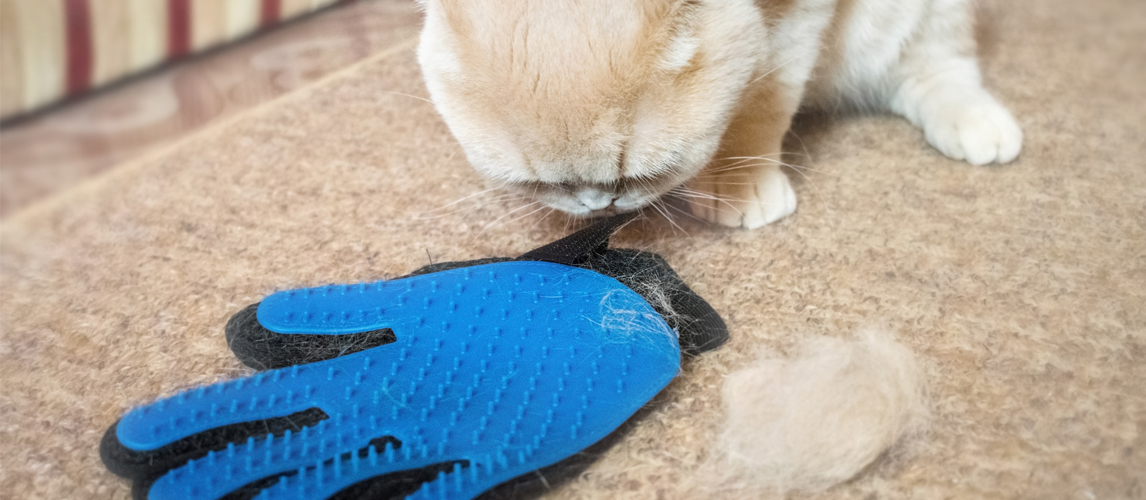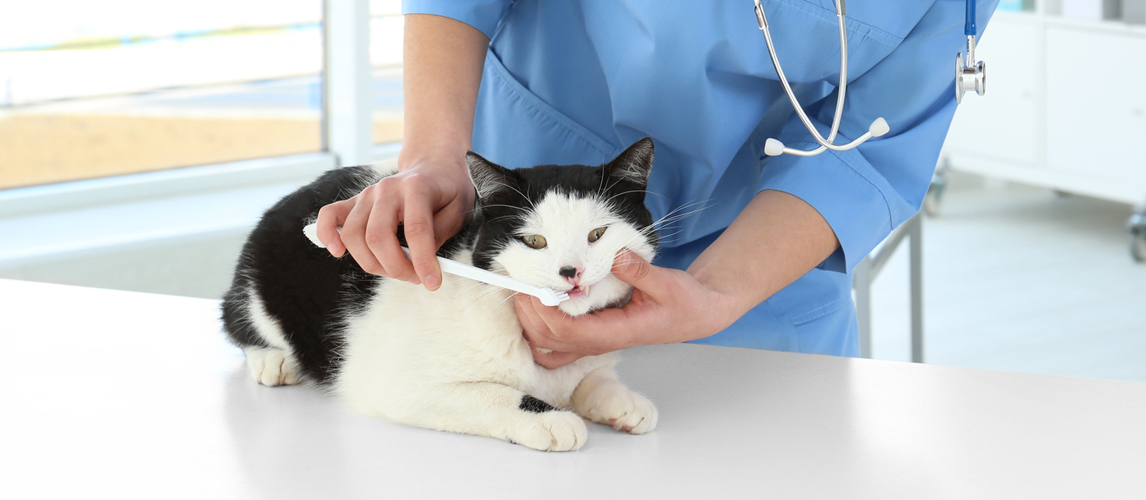Cats are very fastidious groomers. It is very rare to see a cat not grooming itself meticulously as if even a small speck of dirt on its coat is enough to make it go Howie Mandel or even Michael Jackson; that is, become mysophobic. But while dogs are more well-known for being regular customers in pet grooming salons than cats, this is not to say that the felines in our lives don’t deserve the same attention and care needed to keep them well-groomed, neat, and, above all, healthy. Here’s everything you need to know about cat grooming.
Why Cats Groom Themselves
Everyone knows that cats love to groom themselves. Unfortunately, not many pet parents know why felines have this very peculiar behavior. Cats groom themselves for a variety of reasons. Here are some of the more interesting ones.
It’s a great way to stay cool during hot summers
Humans can sweat and dogs can pant to release excess body heat. Unfortunately, cats don’t have either mechanism so they’re actually left with the last thing they can do – lick their bodies.
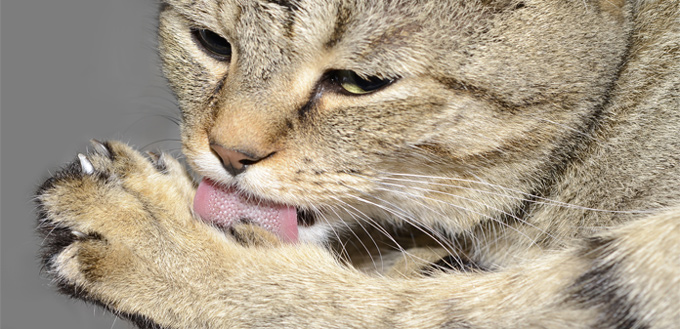
The saliva that they apply onto their coat during grooming will evaporate in hot weather. This is what cools them down. So, if you see your cat doing more grooming on a warm day than on cold nights, just think about their need to be cool and comfy, too.
It’s a sign of an existing health condition
There is such a thing as over-grooming among cats. Cat psychologists liken this to having compulsive behavioral issues. Cats that over-groom themselves tend to have medical problems such as back pain. The excessive grooming behavior is the cat’s way of trying to soothe or relieve an aching body part. On the other side of the coin, not grooming a certain body part may indicate avoidance of such body part. This can indicate severe pain or tenderness that the cat doesn’t really want to touch it.
It’s a way to get rid of emotional baggage
So you think you’re the only one with an emotional baggage? Like any peculiar pet behavior, cats groom themselves as a means to dispel feline anxiety or even excitement. Just as dogs can get unruly when bored or anxious, cats tend to go into a grooming frenzy as a means of coping with their stresses. Psychologists call it displacement. It’s essentially the taking out of one’s impulses, feelings, or frustrations on things that are less threatening. In other words, whatever is exciting or stressing your cat, it’s a lot easier to just lick itself rather than to face the stressor head on.
It’s a good way to bond
Known as allogrooming, cats groom each other as a means of socializing or bonding with each other. The grooming process typically centers on the neck and head region. It is believed that allogrooming helps solidify the relationship between cats. More importantly, allogrooming can distinguish members of a feline pack so if one cat doesn’t have that unique ‘scent’, it is considered as an outcast or one that doesn’t belong to the group.
It’s an inexpensive way to get rid of fleas
While it is true that outdoor cats are more prone to catching fleas than indoor kitties, it is still possible that they may have these pests on their skin especially if they are showing increased grooming tendencies. You see cats can always rely on the special structures on their tongues to remove almost anything that is attached to their fur, fleas included. So if you notice your feline suddenly increase its grooming sessions, there’s a great chance that it may already have fleas it is desperately trying to get rid of.
You May Also Like: Flea Comb for Cats, Flea Shampoo for Cats, Flea Collars for Cats and Flea Treatments For Cats.
How to Groom Your Cat
Given the fact that cats groom themselves rather splendidly, there are some pet parents who don’t necessarily think that their pets still need human assistance when it comes to grooming. The fact of the matter is that they do. Here’s how you can groom your cat.
Brushing
It doesn’t matter if you have a Shorthair or a Persian at home; cats need regular daily hair brushing using appropriately-designed hair brushes for cats. This is to make sure that you are able to remove not only burs and tangles, but also pet dander or dead skin cells on your pet’s skin. Perhaps more importantly is that you’re also able to remove excess hair that can be licked by your pet kitty, swallowed, and form into the classic hairballs that it will be coughing up or, worse, getting lodged inside its tummy.
Related Post: Hairball Remedies for Cats
Always start the grooming session by rubbing your hands on your cat’s body to help loosen any pet hair while also preparing your kitty for the sensation of the cat brush or comb. Get a flea comb and use this to gently run over your cat’s body, paying close attention to black specks that actually look like black pepper, albeit smaller. Follow it up with a bristled brush, following the direction of hair growth. If possible, you can try going against the grain. This will help loosen up other hair. Run a grooming mitt on your pet’s body to help remove loose hair. Alternatively, you can use a damp cloth to get rid of the remaining loose hair.
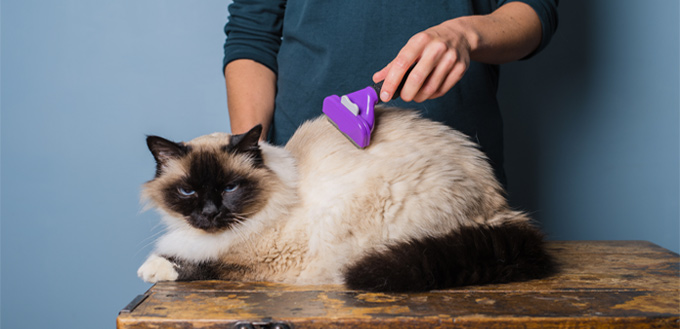
The most important thing to remember is to use only tools that are designed specifically for cats. Your hair brush may work beautifully on your locks, but it may be damaging to your kitty’s fur. Additionally, you may also want to invest in a variety of combs and brushes for cats especially if you have a multi-cat household. Different cats may have different preferences. Some may prefer hard bristles while others go for soft. Some may be okay with pin types while a few may actually like wire types.
Always pay particular attention to your cat’s reaction. Under no circumstance are you allowed to stress your kitty. That’s why it’s best to always start with gentler, softer strokes. It will also be a good idea to take note of your pet’s mood so you’ll have a much better chance of ensuring a successful brushing and grooming session.
Related Post: Best Cat Brush
Bathing
This is quite tricky since it is very rare to see a cat that will readily jump into a pool of water or even to enjoy having a spray of water all over its body. It really is going to be a mess. That is why it is imperative that you start introducing the concept of bathing to your pet as early in its life as possible. As a kitten you may already have to train it to like the idea of having water run all over its body while you later introduce a specially-formulated cat shampoo.
It is imperative that you do not use shampoo intended for human hair. These typically come with harsh chemicals that can strip the natural oils of your kitty’s skin. While human shampoos can have conditioners, the formulation is still very different from the pH of feline skin. So, use only cat shampoo. More specifically, use only cat shampoo that is formulated with pet-safe, natural ingredients. If it is a medicated type of shampoo, then make sure that it is the one prescribed by your vet.
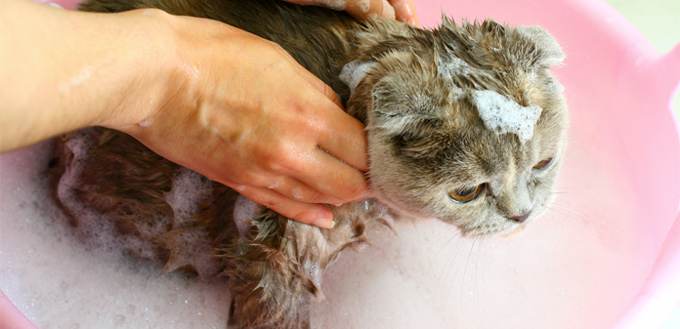
Bathing your kitty can be very challenging. You may need to have an extra pair of hands to help you. Cat treats can also help calm your kitty down. Whenever giving your kitty a bath, avoid showering the head, unless you want scratches all over your face. You can start with the body and include the neck as you work towards the tail and feet. To ‘bathe’ your cat’s head, wipe a damp towel over its face. That should be enough.
This will have a more dramatic effect than simply allowing your cat to groom itself. Honestly, while cats can actually lick even the area between their shoulder blades, there will always be certain body parts that they simply cannot groom themselves. This is where you and your trusty cat shampoo can help to make sure that everything is really clean. Otherwise, if you’re not confident giving your kitty a bath, then you’d better bring it to the spa. Alternatively, you can also use cat bath wipes for a waterless bath.
Trimming the claws
While it’s true that cats love to use the scratching post to sharpen their claws in preparation for their predatory activities, you don’t want your kitties to use these claws to shred your furniture or even leave marks on your skin during cuddle time. Trimming your cat’s claws can help avoid these inconveniences while also saving your cat from hurting itself because of broken nails or claws.
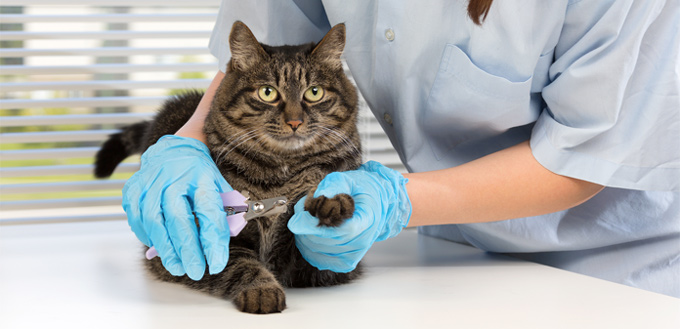
Trimming your cat’s claws is best left to the professionals. However, with practice and the correct set of tools, you can also trim your feline friend’s claws rather easily. It’s imperative that you use only cat nail clippers as they are smaller and are specially designed to follow the contours of your pet’s nails. Cat nail clippers come in various sizes so it’s important to choose one that is of the correct size for your kitty’s claws. Don’t use dog nail clippers as these are generally larger.
As always, start by introducing the cat nail clippers to your pet. It’s imperative that it gets used to the sensation of you holding its paws and its claws. Be mindful of your feline’s body language as tension can make the claw-trimming session very stressful. You don’t want your kitty associating this session with something really unpleasant.
Brushing the teeth
Who would have guessed that cats need to have their teeth brushed, too? The thing is that cats can also benefit from regular brushing of their teeth using an appropriate cat toothbrush and toothpaste. Whatever you do, don’t use human toothpaste as our kitties have never learned the art of spitting the foamy residue of toothpaste. Like dogs, cats will eventually swallow this and can cause stomach upset. It is for this reason that only cat toothpaste should be used.
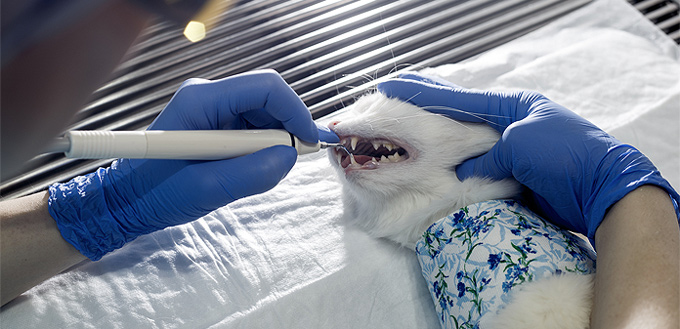
It is always a good idea to introduce toothbrushing while the cat is still a kitten. This will help acclimatize the cat to the sensation of a soft-bristled brush rubbing against its teeth. Now if you happen to have an older cat that is never really trained to have a brush pushed in its mouth, it’s best to introduce the toothbrush and toothpaste gradually.
Of course, if you’re not really confident about it, your vet can do it for you. Alternatively, you can also give dental chews that your pet can nibble on so that it can remove debris and particles in its teeth. Be sure to get a dental chew that is designed specifically for cats, not dogs.
Benefits of Grooming Your Kitty
There are many reasons why grooming our cats can be very beneficial. Here are just some of them.
Shinier coat
In case you haven’t noticed, daily brushing of your hair can give it the shine that you’re looking for. The same is true with cats. Brushing their coat stimulates enhanced oil production while also firming up the skin. This paves the way to a shinier, more shimmering coat.
Minimizes hairballs
There’s no way we can stop cats from licking their furs and forming hairballs. What we can do is to minimize the amount of loose hair that can turn into these furry balls. Grooming helps remove such excess loose hair so they don’t eventually end up in your pet’s tummy.
Opportunity to bond
Just as allogrooming is essential for cats, grooming our kitties also gives us the opportunity to strengthen our bond with them. The mere touch of our skin on their fur is enough to communicate to these pets just how much they mean to us.
Tones muscles
Depending on the pressure applied with each brushstroke, you’re actually providing some form of massage on the muscles of your cat. This can help tone their muscles so they’ll be able to enhance their overall mobility and agility.
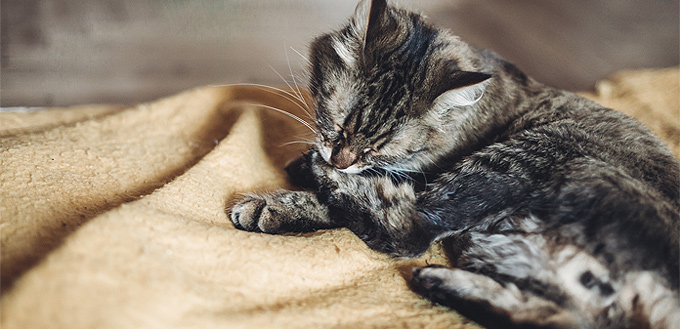
Grooming cats is essentially the same as grooming dogs, with some minor modifications in the tools of the trade. For it to be successful, it is critical to start the grooming tradition while your cat is still a kitten. When it grows up, it will already be accustomed to the different aspects of grooming.
Related Post: Best Nail Caps for Cats
Sources:
- Cheryl Yuill, DVM, MSc, CVH, Grooming and Coat Care for Your Cat, VCA Hospitals
- Lisa Maciorakowski, DVM, Overgrooming Cats, The MSPCA–Angell
- Cat Grooming Tips, The ASPCA


